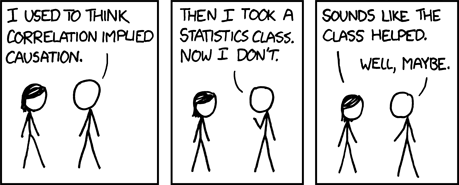Jophiel wrote:
Right. Except that the current temperatures fall right into the predicted range. In fact, if you average out the various predictions for the 2000-2010 range, you get -- hey, pretty much a plateau.
No, you don't. The projections show as you stated, about a .1 degree temperature change over that decade.
The problem isn't with that part though. The problem is with your 2000 "baseline" in the chart right underneath it. The one you then go on to blow up massively to try to make a point.
You placed the 2000 baseline on a very low outlier data point, while ignoring the 5 year average trendline. If you place it *on* the trendline, and then look at where the trendline continues from there (so we're ignoring outliers, like 1998, which had a very high temperature, and 2000, which had a very low one), we find that the net temperature increase over the next few years is microscopic. It's a very very clear slope change from the preceding couple decades.
That's what you seem to be ignoring. The projections of gloom and doom are based on assumptions/predictions that global temperatures will continue to rise at the same or higher rate that it's risen for the last 2-3 decades. If you look at the projections, the lowest of them continue on a more or less straight slopped line, while many of them show an increased slope over the next century (90 years now).
The relevance of the plateau in temperatures is that the predictions of gloom and doom are based on the higher predictions, not the lower ones. Pointing at a couple projections which don't show much increase in the first decade of the century and saying "See! That's what they predicted" isn't that relevant.
Quote:
In fact, if you choose any one of the predictions and average it for this decade you get -- hey, another plateau! Every single prediction shows a dip in temperature during the decade (the lighter colored lines earlier in and the darker ones later in the decade).
Only if you kinda squint hard and see only what you want to see. The predictions are color coded, but by prediction source/methodology. While all of them show dips and ridges, they *all* show the trend going upwards, even when we just look at the first decade.
Look at the blue trendline Joph. That's the 5 year average. That's the line I'm talking about. And that number has absolutely gone up at a pretty steep slope for about 30 years prior to 2000, and then shallowed significantly in the next 8 years. That's the plateau everyone is talking about. It is *not* predicted by global warming theory. The entire argument for spending billions of dollars reducing CO2 emissions rests on the assumption that a plateau would not happen and that temperatures would continue to rise as they had in the previous decades. You can play games with this set of projections, or that set of measurements, but the policies we're talking about don't make sense given the data we're now seeing.
Quote:
I actually get what you're trying to say, it's just that you can't understand why it's not relevant against the rest of the charts.
Because what's relevant is which predictions are used to justify that
political actions global warming activists want us to take, and the fact that those predictions do not appear to match the data. Everything else is static. It doesn't matter.



 Ah, irony...
Ah, irony...




 .
.